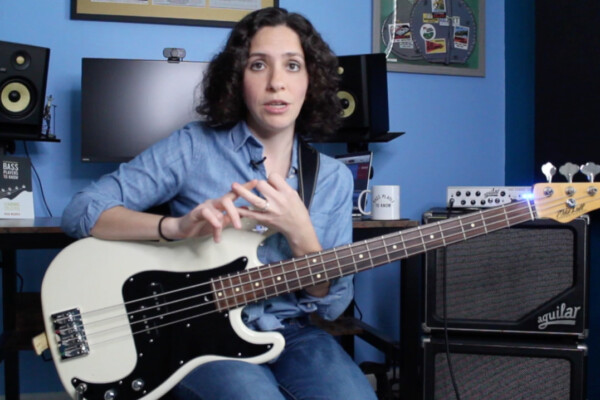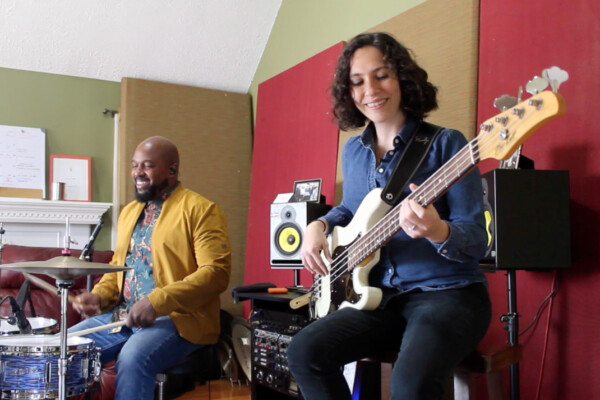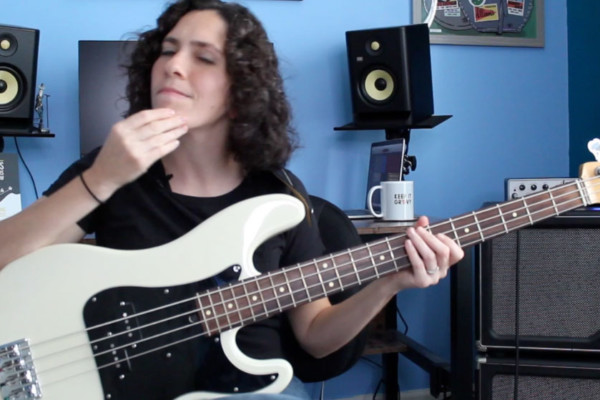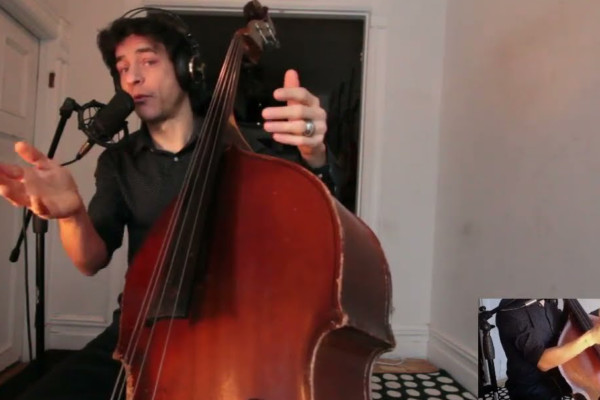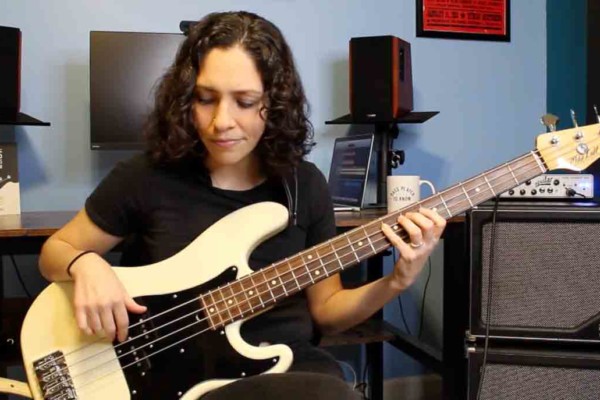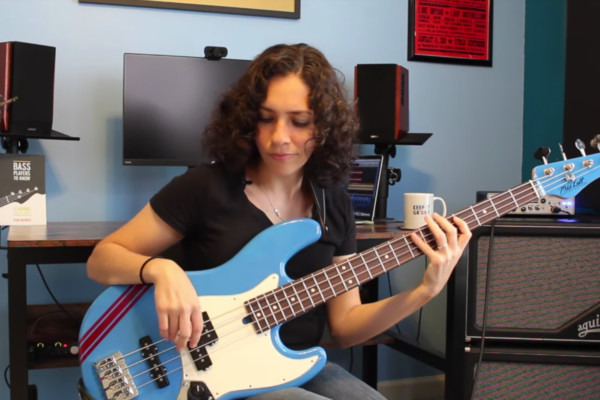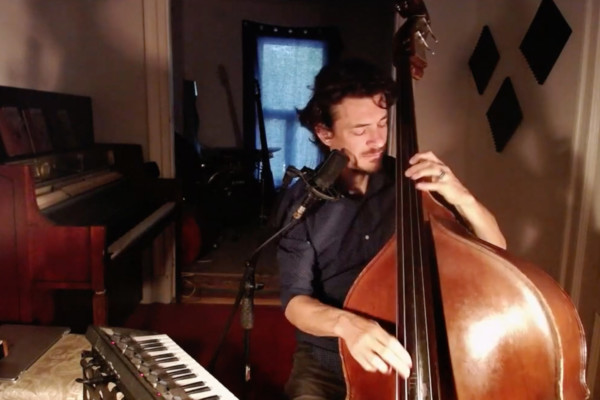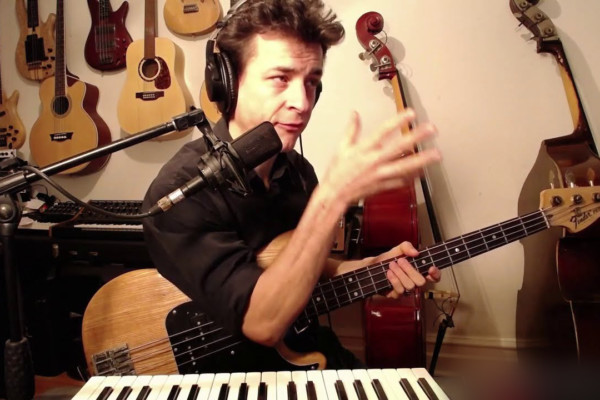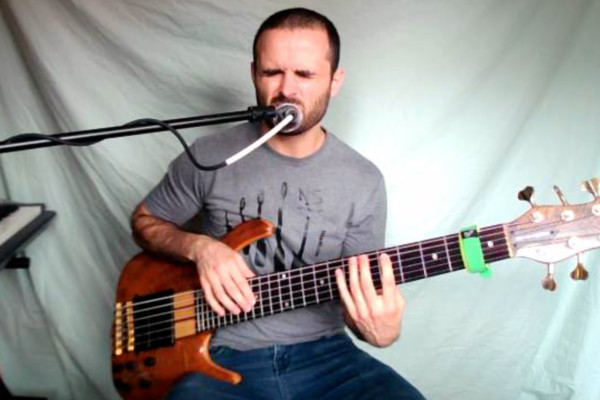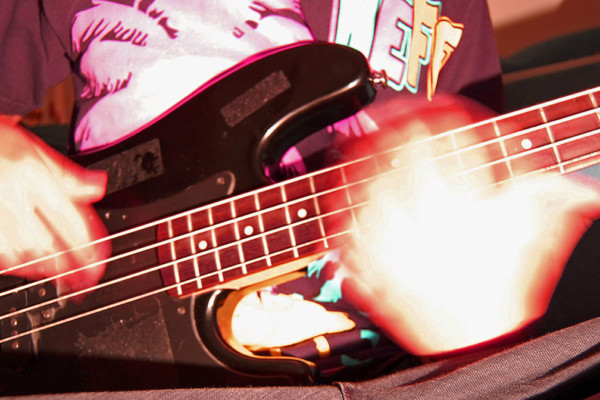Improvising Archives
Keep It Groovy: Beginner Improvisation – What Do I Play In The Key Of A?
In this Keep It Groovy lesson, Ryan Madora explores tips and tricks for improvising a bass line. Working in the key of A, we’re settling on a particular chord progression and spending two bars on each chord.
Keep It Groovy: How To Jam In A Rhythm Section Jam: B Minor Blues
In this “Keep It Groovy” lesson, Ryan Madora references a popular minor blues groove similar to the B.B. King classic, “The Thrill Is Gone,” and uses it as inspiration for a new groove.
Keep It Groovy: Create A Funky Groove Using Just Two Notes
In this “Keep It Groovy” lesson, Ryan Madora discuss how to improvise a simple groove with just two notes. By playing a note multiple times, adding in dead notes, or creating a “note sandwich,” we can start simple and slowly add in the funk.
Bass & Creativity: Ghosts & Voicings
In this new “Bass & Creativity” lesson, Olivier Babaz talks about how improvisation is a great tool to practice and expand the use of new musical techniques or ideas. He covers two ideas: ghost notes and modulation with voicings.
Keep It Groovy: Basic Tips For Improvising A Bass Line While Jamming Or Recording
Ryan Madora’s latest “Keep It Groovy” lesson is all about finding a simple yet effective part to accompany a song. Here are some basic tips for improvising a bass line. Always let the chord progression be your guide and keep it groovy!
Keep It Groovy: Beginner Improvisation For Bass Players – Location Jumping
In today’s “Keep It Groovy” lesson, Ryan Madora focuses on an important element of improvisation: location jumping. The goal is to build a bass theme and identify other locations on the fretboard where we can easily play it.
Bass & Creativity: Building a Story
The best way to engage listeners is to craft a story with your music. In this “Bass & Creativity” lesson, Olivier Babaz takes a look at ideas and methods to build a story through your improvised solos and compositions.
Bass & Creativity: Improvisation and Ear Training
In this lesson, we take a look at a way to build speed and effectiveness in recognizing intervals. We'll also learn to deduce chords and scales by ear through improvisation. Once again, the addition of piano with the right hand is a great way to expand our options from a bass perspective.
Tapping Technique: Rhythmic Displacement of Melodies
Two-hand tapping on an electric bass can be used in a multitude of ways. In his new “Tapping Technique” lesson, Josh Cohen covers the creation of improvisations in the upper register with the right hand while playing a bass line in the left hand.
Learning to Improvise
A reader, who started on piano, reached out to Damian mentioning that while he’s educated in the areas of reading, there was never a focus on improvising. He said he feels “robotic” and asked for some pointers. That’s the subject of this week’s “Ask” column.
Fighting The Urge To Improvise
Q: I’ve been a bassist for 14 years now, when I started out (much like everyone, I assume) I played what we know as “bass lines”, the notes that the bassist played on the recording to the song. As I developed and learned more about chord construction and harmony I started to understand how these lines were built. I got...
Finding the Groove Vs. Letting the Groove Find You
Q: When making music, i.e. improvising, making a song, creating a groove, etc., I find myself sometimes approaching it from what I hear while fiddling around, and at other times approaching it more cerebral, as in “let’s create a groove that has a flat nine in it.” I like to call these the bottom up (let the sounds guide me)...
